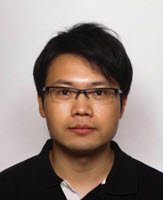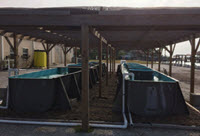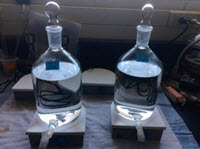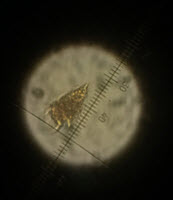
Marine protists are single-celled planktonic creatures that form the base of the marine food web and perform important ecosystem services, including driving photosynthesis and the carbon and nitrogen cycles. Protist communities include energy-producing organisms, such as phytoplankton, that use sunlight or chemical reactions to generate their own food. Protists also include predators, such as microzooplankton, that eat the energy-producing protists.
After Deepwater Horizon, research found that spilled oil significantly lowered phytoplankton abundance and shifted the community species composition from ciliates and phytoflagellates to diatoms and cyanobacteria. Researchers also observed that chemically dispersed oil reduced the abundance of certain ciliate microzooplankton species that feed on energy-producing protists. Understanding how concurrent oil spill effects and altered predator-prey interactions influence these bacterial communities could help spill responders and ecosystem managers anticipate algal blooms and food web changes.
Chi Hung “Charles” Tang conducts oil exposure experiments on protistan predators and producers to examine how oil and dispersant affect their ability to carry out ecological functions and support the food chain. His findings will help determine the oil or dispersant concentrations that impact the growth and grazing interactions of Gulf of Mexico protist communities.
Charles is a Ph.D. student with the University of Texas at Austin’s Department of Marine Science and a GoMRI Scholar with the Dispersion Research on Oil: Physics and Plankton Studies III (DROPPS III) consortium.
His Path

As a biology undergraduate student at the Chinese University of Hong Kong, Charles conducted a senior research project that investigated the changing temporal and spatial patterns in phytoplankton community composition across a southern China estuary. Charles measured the physicochemical conditions of seawater, collected phytoplankton samples, and used statistical analysis to examine environmental drivers, which deepened his interest in the ecology of planktonic organisms.
Charles completed a biology master’s degree at the Chinese University of Hong Kong and began searching for a Ph.D. program studying phytoplankton and microzooplankton ecology. He read about Dr. Ed Buskey’s research on the relationship between Texas brown tides (algal blooms) and zooplankton grazing and asked Dr. Buskey about potential graduate research opportunities. Dr. Buskey felt that the GoMRI-funded oil spill research that he and his team were conducting was a perfect fit for Charles and would allow him to develop his own research focus. Charles joined Dr. Buskey’s lab as a graduate researcher investigating oil’s influence on microzooplankton grazing.
His Work

Charles began his research using outdoor mesocosm experiments that exposed natural protist communities containing both producers (phytoplankton) and predators (microzooplankton) to dispersed crude oil. He determined rates of producer growth and predator grazing after two and six days of exposure. While microzooplankton’s grazing habits consumed ~40-60% of the energy that producers generated daily under normal conditions, he observed reductions in producer growth and predator grazing after two days of exposure. After six days, however, he observed recovery in producer growth but a continued reduction in predator grazing, suggesting that predator communities may be more susceptible to oil exposure than producers.
“My findings suggest that, because oil impacts their natural predators more severely, the less-susceptible phytoplankton producers may have a chance of unchecked proliferation, which could potentially lead to algal blooms under certain conditions,” explained Charles. “Additionally, the reduced feeding and, therefore, reduced growth of the protistan predator community could lead to reduced food sources for organisms at higher trophic levels, such as larger zooplankton, larval fish, and bivalves.”

Charles’s current experiments examine how different oil and dispersant concentrations affect the population growth of both producers and the ingestion rate of predators and the prey. He conducts laboratory experiments that incubate protistan predators and producers separately under short- (24-hour) and long-term (days) exposure to environmentally realistic oil and dispersant concentrations that resemble conditions near the sea surface following an oil spill. His short-term experiments examine how crude oil alone, dispersant alone, and crude oil plus dispersant (20:1 oil to dispersant, the application ratio used during Deepwater Horizon) affect protistan predator grazing. Long-term experiments examine how crude oil plus dispersant concentrations ranging from 1 to 30 µL/L (reflecting conditions observed following Deepwater Horizon) affected the population growth of predators and producers.
Charles uses a compound microscope to observe prey ingestion and population growth and estimate the median inhibitory concentration (IC50, the concentration that causes a 50% drop in protistan population growth) of chemically dispersed crude oil for protistan species, which reflects their sensitivity to oil pollutants. He also applies DNA sequencing to determine which microorganisms are present in the water samples at the different time points, which can help him characterize how protistan predators feed on producers in oil-polluted water. “Since producers can be very tiny and morphologically indistinguishable, DNA sequencing can help identify what types of bacteria are present in oil-loaded seawater,” explained Charles. “Although bacterial producers are subject to grazing by small protistan predators, some producers can consume carbon and other components from biodegraded oil as an alternative food source and can therefore grow rapidly when oil is spilled in the water column.”
Charles is still collecting and analyzing his data, but his preliminary results suggest that grazing by protistan predators was significantly reduced at high concentrations of chemically dispersed crude oil (10 µL/L) when compared to control treatments. He hopes that his findings provide key evidence that will help us better understand the consequences of oil spills on marine ecosystems.
His Learning
Charles speculates that he may not have been able to conduct his self-developed experiments without Dr. Buskey’s mentorship and financial support. Dr. Buskey’s support for Charles’s projects taught Charles that scientific research is greater than one researcher and requires a dedicated and collaborative team. He experienced this collaboration on a larger scale at the annual Gulf of Mexico Oil Spill and Ecosystem Science conference, where he met other GoMRI scientists to exchange ideas and identify new research methods. “I share the values of the GoMRI science community to improve our ability to understand, respond to, and mitigate the problems caused by petroleum pollution,” he said. “The conference is a good opportunity for us to collaborate and work together towards our goals.” He plans to seek a postdoctoral position, so that he can continue conducting marine science research.
Praise for Charles
Dr. Buskey explained that Charles’s hard-working personality shone when he faced and successfully worked through several challenges beyond his control, including the laboratory’s closures following Hurricane Harvey in 2017 and the ongoing COVID-19 response. Dr. Buskey said, “We recently learned that Charles is a recipient of the highly competitive Continuing Fellowship from the University of Texas at Austin Graduate School for summer 2020. Congratulations, Charles!”
The GoMRI community embraces bright and dedicated students like Charles Tang and their important contributions. The GoMRI Scholars Program recognizes graduate students whose work focuses on GoMRI-funded projects and builds community for the next generation of ocean science professionals. Visit the DROPPS website to learn more about their work.
By Stephanie Ellis and Nilde Maggie Dannreuther. Contact sellis@ngi.msstate.edu for questions or comments.
************
The Gulf of Mexico Research Initiative (GoMRI) is a 10-year independent research program established to study the effect, and the potential associated impact, of hydrocarbon releases on the environment and public health, as well as to develop improved spill mitigation, oil detection, characterization and remediation technologies. An independent and academic 20-member Research Board makes the funding and research direction decisions to ensure the intellectual quality, effectiveness and academic independence of the GoMRI research. All research data, findings and publications will be made publicly available. The program was established through a $500 million financial commitment from BP. For more information, visit http://gulfresearchinitiative.org/.
© Copyright 2010-2020 Gulf of Mexico Research Initiative (GoMRI) – All Rights Reserved. Redistribution is encouraged with acknowledgement to the Gulf of Mexico Research Initiative (GoMRI). Please credit images and/or videos as done in each article. Questions? Contact web-content editor Nilde “Maggie” Dannreuther, Northern Gulf Institute, Mississippi State University (maggied@ngi.msstate.edu).
